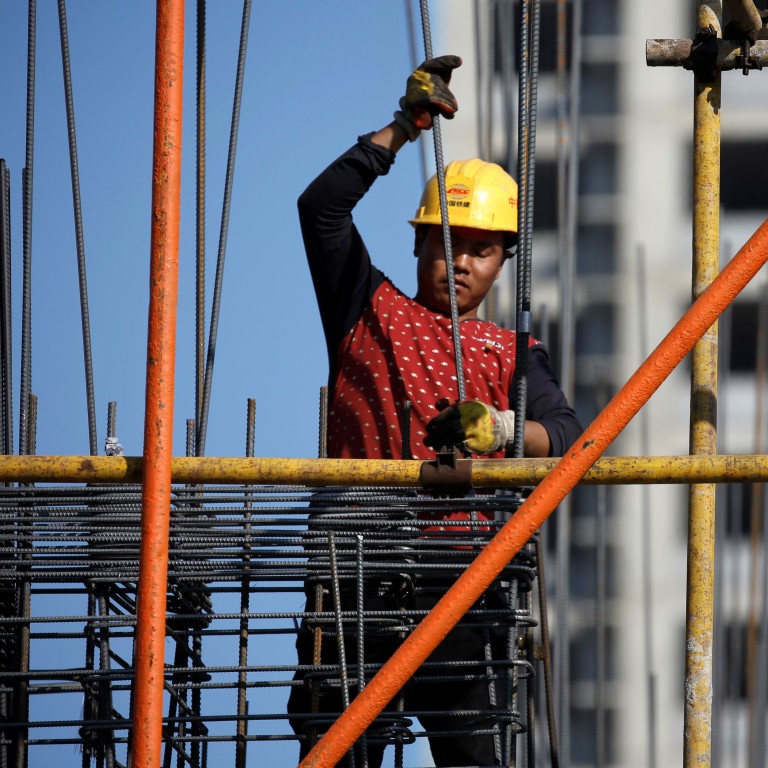
China GDP: Beijing cites ‘policy flexibility’ as reason for dropping specific growth target for 14th five-year plan
- Unlike in previous years, the 14th five-year plan for 2021-25 does not specify an economic growth target
- China’s top economic planning agency says this gives Beijing more ‘policy flexibility’ to deal with uncertainty
China has for the first time abandoned an overall economic growth target in its next five-year plan to provide the government flexibility to cope with risks at home and abroad, the country’s top economic planning agency said on Monday.
Hu Zucai, the deputy director of the National Development and Reform Commission, said this gave Beijing more policy flexibility.
“It leaves room to deal with the uncertainties. It is also good for guiding all parties to focus on improving the quality and efficiency of development,” he said at a press conference on Monday.
It does not mean that China will not need a GDP growth rate any longer
“[But] it does not mean that China will not need a GDP growth rate any longer.”
Traditionally, the economic growth target in five-year plans has acted as a road map for development and been tied to the careers of top political officials across the country. Gross domestic product (GDP) competition among local governments has played a crucial role in supporting China’s growth miracle over the past four decades.
However, following the impact of the coronavirus pandemic and rising debt risks associated with pursuing unrealistic growth targets, some academics and advisers called on Beijing to adjust its macroeconomic evaluation system and potentially abandon annual GDP targets.
Before China’s “two sessions”, which started last week, many analysts expected the government to drop the annual GDP target in 2021 for a second year in a row, but maintain a five-year goal.

03:56
China’s 2021 National People’s Congress opens with Hong Kong’s electoral system on the agenda
Andrew Batson, China research director for Gavekal Dragonomics, said the decision to abandon an overall GDP target showed China’s leadership had a more complex view of development goals.
“The plan looks like a compromise between those who think growth targets are distorting and unnecessary, and those who think China still needs high growth to achieve its dream of national greatness,” he wrote in a note on Monday.
Beijing-based research firm Trivium China praised the decision, saying less money would be funnelled into unproductive projects.
Hu said China’s economy had evolved to a “high-quality development stage” and could no longer simply chase after a GDP growth rate figure, especially at the expense of “quality, efficiency and the ecological environment”.
But because GDP expansion remained the core indicator to gauge development and international competitiveness, the government included it in a different form, he said.

03:26
Two sessions: How China's environmental policies are giving a boost to green industries
“A reasonable growth rate is required to achieve modernisation. China is still the largest developing country in the world, development is still the foundation and key to solving all problems,” Hu said.
A certain level of growth was also needed to achieve President Xi Jinping’s target of doubling per capita GDP by 2035, he said. Annual targets for economic growth, energy consumption per unit of GDP and emissions intensity will be proposed each year according to circumstances.
Looking ahead, China’s economy is likely to grow over the next five years by between 5 and 6 per cent, Li Xuesong, a senior research fellow at the Chinese Academy of Social Sciences, estimated last November.
Liu Yuanchuan, vice-president of Renmin University of China, said last December the country needed to reach an average annual growth rate of 4.78 per cent in the next 15 years to achieve Xi’s per capita GDP goal by 2035.

